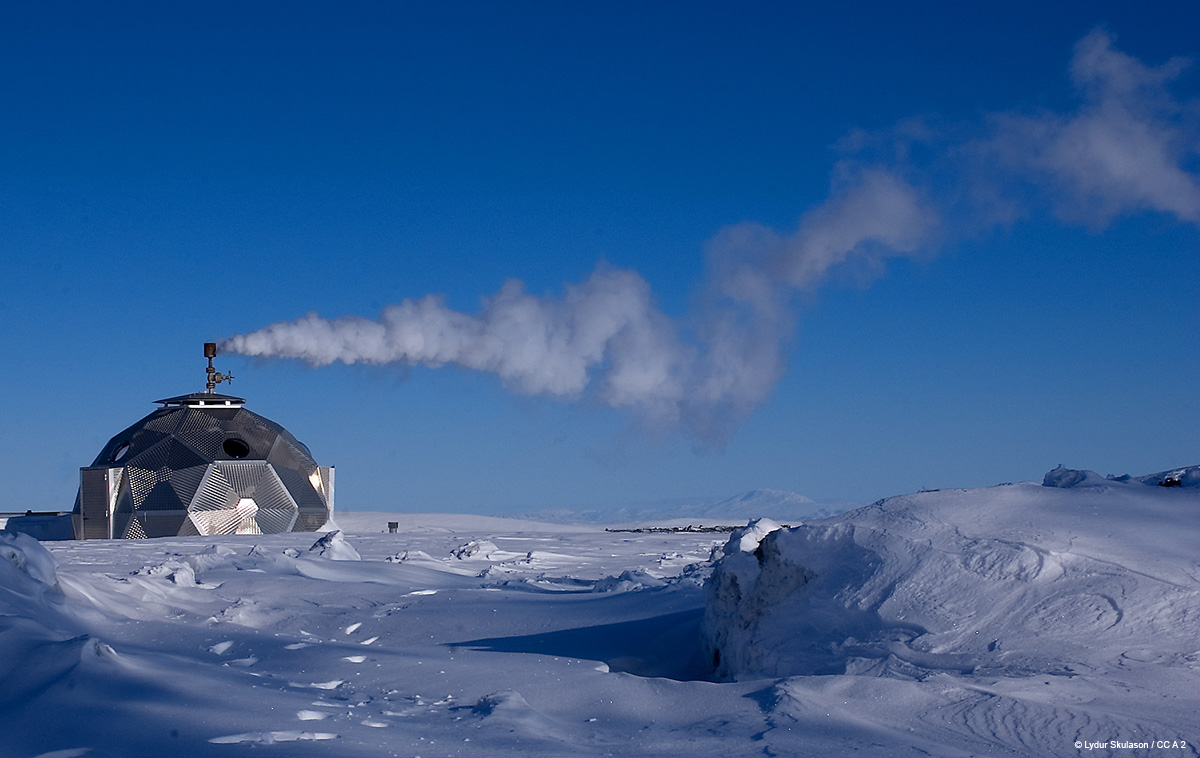In April, 2015, U.S. Secretary of State John Kerry traveled to Iqaluit, Canada, to assume Chairmanship of the Arctic Council. Since its inception in 1996, the Arctic Council has been a valuable international forum in addressing environmental, scientific, and societal issues that affect the four million people who live in the circumpolar region. The threat from climate change affects everything we do, especially in the Arctic where temperatures are rising twice as fast as the rest of the world. AMOS HOCHSTEIN says the U.S. Chairmanship intends to prioritize renewable energy in remote Arctic communities. This article originally appeared in The Circle 03.15.
VILLAGES IN ALASKA are burdened by some of the highest energy costs in the Unites States. Rural Alaska is home to about 140,000 people spread over an area twice the size of Texas, or seven times the size of the United Kingdom. Many of these communities are not road-accessible, which means they are almost solely reliant on diesel fuel either shipped or flown in via barges or airplanes. This added transportation can make the cost for electricity, home heating, and transportation exponentially higher. While many parts of the North American Arctic have great access to wind, hydro, and geothermal resources, growth in the renewable sector has been slow, largely due to small markets and immense technical hurdles.
For many people in the Arctic, renewable energy access isn’t just about climate change; it impacts their very survival and the survival of their communities. Black carbon emissions from diesel electricity and home heating are a public health risk. At the same time, the high cost of shipping or flying in diesel fuel has created energy migrants – people forced to leave their ancestral homes because they can no longer afford to live there. Developing renewable energy resources is directly tied to economic development in the Arctic – good paying jobs for local residents, keeping more money in the villages and spending less on the diesel barge, and creating more sustainable, healthier villages.
The Arctic Council is not just about what national governments can do for Arctic communities, but what the people of the region can teach us. The focus of the U.S. Chairmanship on renewable energy in the Arctic will add further momentum to other excellent efforts already taking place in the sector. To support improving clean energy access for Arctic communities, we are including the Remote Community Renewable Energy Partnership (RCRE) as part of our robust Arctic Council agenda. Through RCRE, a joint research project between the Department of Interior and the Department of Energy’s National Renewable Energy Lab, scientists and engineers hope to ease integration of high levels of wind power into diesel micro grids. This research could have positive implications throughout the world for those who live in remote areas, from islands in the Pacific and Caribbean to Sub-Saharan Africa.

Geothermal borehole house, Iceland. 100% of Iceland’s energy comes from renewable sources. © Lydur Skulason / CC A 2
Our Arctic neighbors have a wealth of expertise to share on renewable energy in harsh climates. From hydropower in Norway, geothermal in Iceland, and energy efficiency in Finland, there is a lot we can learn from each other. The Arctic Energy Summit to be held in Fairbanks in September 2015 is a great example of how we can coordinate and share best practices from around the North Pole. The Department of State and our embassies in the Arctic also hope to tap into local know-how through our proposed Arctic Clean Energy Innovation Prize. Anyone from students to community leaders will be invited to submit business plans that promote clean energy and reduce dependence on diesel fuel. The best teams from each country will be invited to present their proposals, and the overall winner will receive a cash prize.
To support rural Arctic communities as they transition towards clean energy, we must act as One Arctic, the theme of our Chairmanship, even as conditions vary from country to country and town to town. Each nation has something to share across the Pole and with the rest of the world. We thank Canada for its tremendous work in supporting sustainable development of Arctic communities during their Chairmanship and we look forward to carrying on their great work over the next two years. Through our Chairmanship, we hope to bring attention to this magnificent place, its people, and its renewable energy potential.
AMOS HOCHSTEIN is Special Envoy and Coordinator for International Energy Affairs at the U.S. Department of State.
